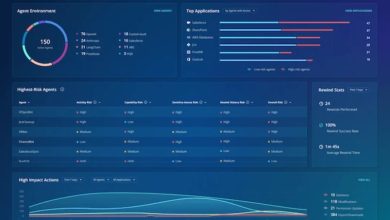Downtime’s Bill, Human Spill, and Gen AI’s Thrill: The CEOs’ Sleepless Symphony
Downtime Is a Major Source of Sleepless Nights, Too

In today’s fast-paced, digitally-driven world, CEOs and business leaders are losing sleep over more than just employee retention, talent acquisition, and innovation. It is the unassuming yet impactful issue of downtime that often tops their list of concerns.
The recent global IT outage is a stark example of this, affecting more than 49 million people and accruing more than USD $1 billion in financial costs.
It is, however, just a reminder of the larger ongoing issue of downtime which costs organisations USD $187 million per year in APAC alone.
This echoes a recent report from PWC, which revealed that Singaporean businesses have been hit especially hard, with 98% having experienced disruption in the past two years. This figure far outstrips their Asian counterparts, causing considerable anxieties among executives – turning restful nights into restless worry.
Crunching the Numbers of Downtime
But what’s the big deal about downtime? Let’s talk numbers.
The global 2000 companies lose an estimated USD $400 billion annually when their digital environments falter unexpectedly—that works out to USD $20 million per company, or roughly 9% of profits—a significant loss by any standard. Undoubtedly, loss of revenue is number one on the list of direct costs at USD $49 million annually, taking up to 75 days to recover.
This translates to an average cost of USD $9,000 per minute or USD $540,000 per hour of downtime. Given these figures, it’s no surprise that business leaders are losing sleep.
The (Hidden) Costs of Downtime
While relatively trickier to measure and less visible, the hidden costs of downtime can be just as impactful as direct costs. When downtime occurs, teams are forced to shift from high-value tasks to applying software patches and participating in postmortems.
This shift impacts productivity and slows innovation velocity and time-to-market, potentially costing tens of millions in aggregate and harming competitive standing.
Moreover, downtime can also significantly damage customer experience and loyalty and negatively impact public perception, especially if the incident triggers a social media backlash. In fact, 40% of Chief Marketing Officers report that downtime negatively affects the average customer lifetime value and another 40% state it harms reseller and/or partner relationships.
This not only tarnishes a company’s reputation but also exposes its vulnerabilities to the very customers it aims to serve.
Perhaps the most significant hidden cost is the impact on shareholder value—organisations can expect their stock price to drop up to 9% after a single downtime event and take an average of 79 days to recover.
While these numbers may continue to haunt business leaders, the key to mitigating the adverse effect of downtime is strengthening digital resilience. Successful leaders have cultivated a culture of resilience within their organisations by prioritising data management and integrating advanced tools and technologies, including Artificial Intelligence (AI)(, to develop more sophisticated security and monitoring strategies.
Caught Red-Handed: Human Error as Downtime’s Top Culprit
Surprisingly, in our high-tech world, human error takes the lead in downtime causes, which can be partially attributed to the ongoing talent shortages in the cybersecurity space. Gartner predicts that by 2025, human blunders will account for over half of significant cyber incidents. Furthermore, human error also takes the longest to detect and remediate—on average, a whopping 17 to 18 hours tick by before organisations notice an incident.
This situation underscores the critical role of employing the right tools to help employees gain comprehensive visibility into an organisation’s infrastructure—with ease.
In Japan, 35% of respondents in Splunk’s recent State of Security report say their security stacks have become too convoluted while 29% say that they are unable to effectively analyse all security-relevant data. Similarly, Australians report experiencing higher nation-state attacks (56%) compared to their peers (39%), which could be attributed to visibility-related issues.
While businesses are busy fending off cyber criminals, they should also remember to keep an eye on the man in the mirror.
Gen AI: Trending for a Reason
Fret not, as this is where Gen AI can potentially come into play. According to Splunk’s recent report, 58% of organisations conveyed that the technology can be wielded to onboard entry-level talent faster.
At the same time, it can also be leveraged to bolster cyber defences. While 70% of security experts believe that Gen AI will create an asymmetrical battlefield that will inevitably be tipped in favour of cyber adversaries, 35% are already experimenting with AI for positive security applications.
Numerous organisations are already embracing Gen AI. This can be seen in the way resilient leaders are able to recover faster—rebounding 28% quicker than most from downtime, and 23% faster from cybersecurity incidents.
Notably, their investments tend to embrace AI’s benefits by embedding Gen AI features in their tools at a rate 4x faster than others. Similarly, organisations reaping the largest returns from Gen AI are more likely than others to follow a range of best practices, such as senior leaders being cognisant of the value of Gen AI for their businesses.
This strategy has paid off in spades—comprehensive visibility, with the leg up from AI, has provided resilient leaders with faster fixes and fewer outages, resulting in greater ROI and improved digital resilience.
Digital Resilience Is Organisational Resilience
Digital resilience is more than just a buzzword in today’s business landscape, especially for organisations in APAC and Singapore. The frequency of disruptions and the constant concern over security, supply chain, and operational failures underscore its importance.
This need for digital resilience was clearly evidenced by the recent global IT outage, which was caused by just a single software update gone wrong, highlighting the urgent need for robust digital resilience in our increasingly interconnected world.
Neglecting AI and sustainable IT practices could risk businesses being unprepared for market changes and technological disruptions, thereby undermining their digital resilience.
While Gen AI can be a powerful ally, organisations also need to be aware that it is not a blanket solution. As with any tool, users need to properly evaluate their specific circumstances in order to deploy the right AI-powered solutions to address their needs.
Moreover, to achieve true digital resilience, the solution extends beyond simply having the right tools. Organisations must place a greater emphasis on collaboration and tool consolidation as well. Digitally resilient organisations are breaking down silos and fostering increased collaboration among engineering, security, and IT operations.
It is not simply about mitigating losses but also about capitalising on opportunities to streamline operations. It’s about transforming businesses from being reactive to resilient.
So, isn’t it time we stopped counting costs and started turning our nightmares into sweet dreams?




